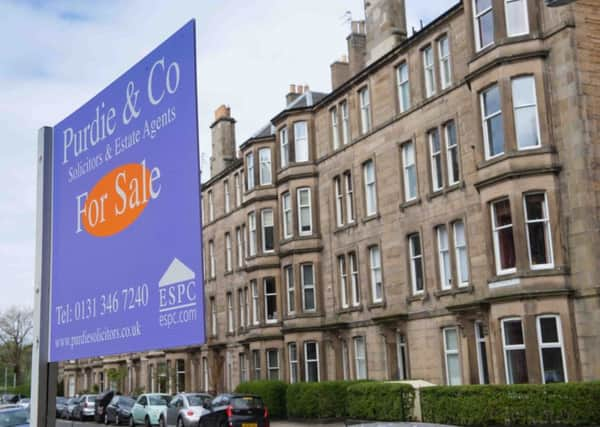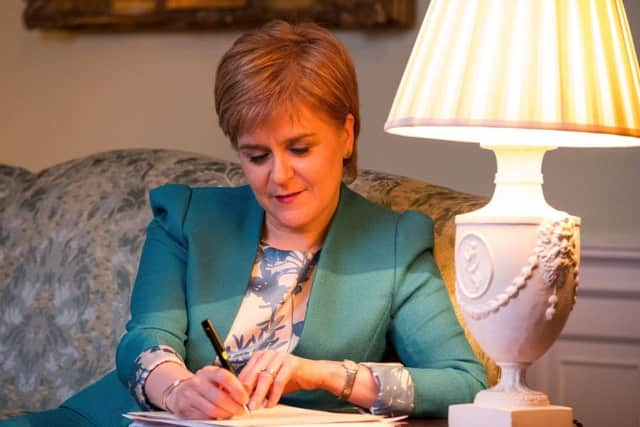Indyref2 threat causing `turmoil' in property market


The warning from eMoov.co.uk chief executive Russell Quirk follows analysis by his company which shows that Nicola Sturgeon’s announcement of a draft second referendum saw property price growth slow.
The analysis looked at Land Registry date from the SNP achieving a majority in May 2011, the passing of the Referendum Act in 2013, the 2014 vote itself, the passing of another Referendum Act last year to the present day.
Advertisement
Hide AdAdvertisement
Hide AdWhen Alex Salmond returned a record number of SNP MSPs, the average house price across Scotland fell by -0.01 per cent immediately that month.


The SNP’s promise of a referendum saw the market “yo-yo” and over the following two years, the average Scottish house price fell by -0.14 per cent with 16 of the 24 months in this period seeing a monthly drop in prices.
In April 2014 Scottish home-owners enjoyed a healthy monthly increase in values of 2.33 per cent, but with the referendum on the horizon, this rate of growth slowed over the next four months before prices fell -0.57 per cent during the month of the September vote.
Since the No vote Scottish homeowners have seen an overall, if only marginal, lift in property values. According to eMoov.co.uk the further uncertainty of a second referendum is once again seeing price growth behave erratically month to month.


Nicola Sturgeon’s announcement of a draft of a second referendum came in a month where price growth hit 2.21 per cent on average. Following her announcement, this monthly growth slowed to 0.71 per cent before falling gradually up until the second bill was announced in October 2016 when prices fell by -0.89 per cent in a month.
Founder and CEO of eMoov.co.uk, Russell Quirk, said: “It is clear that should there be a vote for independence, the knock-on effect to the property market will be notable. Since the people of Scotland already voted no, house prices across the nation have seen an increase of five per cent, but the mere action of a referendum vote has been enough to cause considerable turmoil. A vote to leave would make for very precarious times ahead and it is in these times of unrest that employment and the wider economy suffer, with the result often being the repossession of homes and downward pressure on house prices.
“As we’ve seen with Brexit, the uncertainty of an outcome can cause just as much turbulence to the property market as the decision itself. It was a pretty close call last time around and so it’s understandable that homeowners on both sides of the Scottish referendum coin would look to either hold off on or push through a sale, depending on their own preference. This out of the ordinary manipulation of the market on both sides is no doubt the most influential factor behind this market movement.
“It certainly doesn’t help that once a decision has been reached, the SNP continue to stoke the fires of change with plans for a second vote. It’s fair to say that the Brexit vote was more monumental and pivotal, but despite this the market south of the border has remained steady where price trends are concerned. Having weathered the storm the initiation of Article 50 should see normality return to the property market in England and Wales as it finally emerges from a tunnel that the Scottish market is, for the second time, just about to enter.”
Advertisement
Hide AdAdvertisement
Hide AdA Scottish Government spokeswoman said: “A hard Brexit is the biggest threat to Scotland’s economy, potentially costing our economy around £11 billion a year by 2030, and seeing 80,000 jobs lost over a decade. In such circumstances, it is absolutely essential that people are able to choose independence as an alternative, once the terms of the Brexit deal are known.
“Scotland’s economy is strong, with productivity growing four times faster than in the UK as a whole and GDP per head in Scotland is higher than the UK average, excluding London.”
